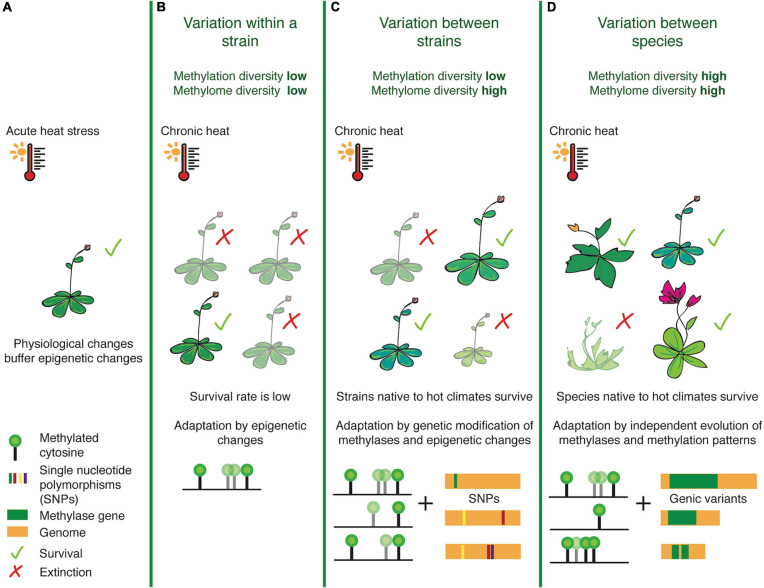FIGURE 1.
Illustrating the differences between methylation and methylome diversity at the population, strain and species-levels. Taking the example of heat stress, physiological changes often occur as an immediate response to acute changes in temperature before epigenetic pathways and transgenerationally stable changes in epigenetic landscapes fall into place (A). When the stress is chronic, populations belonging to a strain (B) non-native to the harsh temperature change often exhibit low survival rates, as they have rather homogenous methylation patterns and can rely only on rapid epigenetic/epigenomic changes for rapid stress-response mechanisms. Between strains however (C), methylome diversity is high and this may enable survival for plants harboring heat-resistant epialleles and modified methyltransferases. At the species-level (D), plants exhibit high levels of methylation and methylome diversity, due to evolutionary fixation of genetic and epigenetic marks, thereby providing an edge for heat-primed species to adapt with greater ease.

